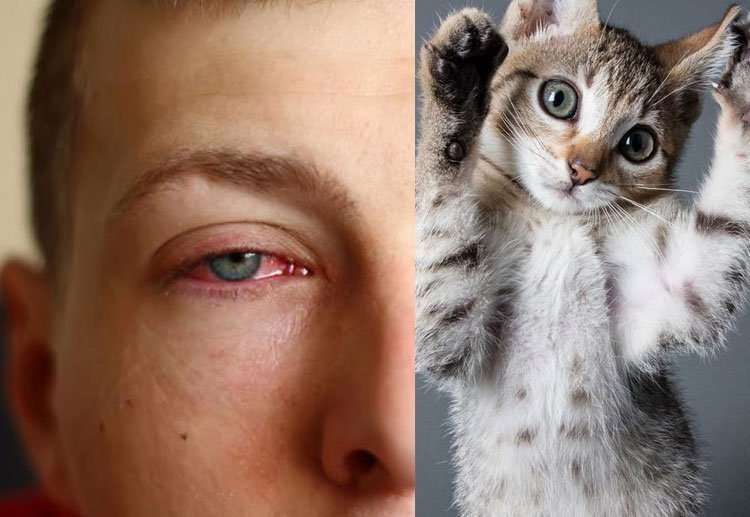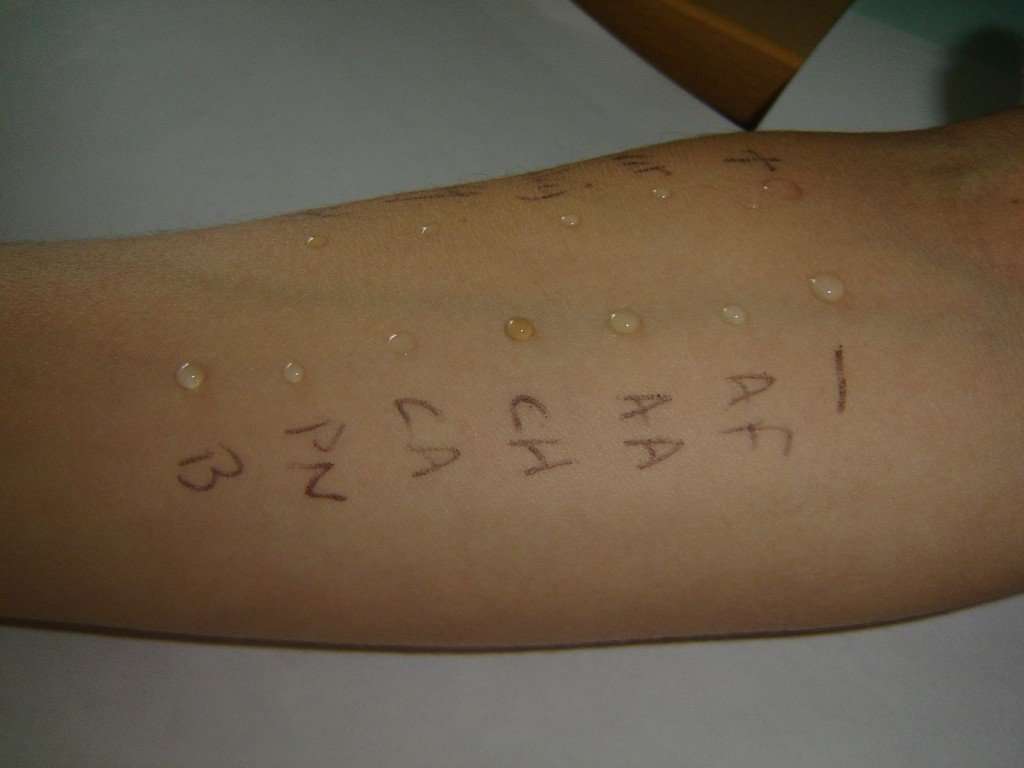Are You Allergic To Your Pet
Are You Allergic to Your Pet? Breathe EasyYou Can Still Keep Your Animal Companion!
Although many people have discovered the beneficial effects of caring for a furry friend, the fact remains that roughly 15 to 20% of the population is allergic to animals. The result? Countless pet parents in unhappy, unhealthy situationsand their beloved pets are the cause! Allergen is the medical term for the actual substance that causes an allergic reaction. Touching or inhaling allergens leads to reactions in allergic individuals. Symptoms can include red, itchy, watery eyes and nose sneezing coughing scratchy or sore throat itchy skin, and most serious of all, difficulty breathing.
The most common pet allergens are proteins found in their dander , saliva, urine and sebaceous cells. Any animal can trigger an allergic response, but cats are the most common culprits. People can also become allergic to exotic pets such as ferrets, guinea pigs, birds, rabbits and rodents. There is no species or breed to which humans cannot develop allergies. Fur length and type will not affect or prevent allergies. Certain pets can be less irritating than others to those who suffer from allergies, but that is strictly on an individual basis and cannot be predicted.
Improving the Immediate Environment
Taking Care of Yourself
How Do You Know If You Are Allergic To Cats
Most people suspect they are allergic to cats based on the symptoms they experience when they are around cats. Symptoms alone, however, will not reveal which specific proteins a person is allergic to. Allergy tests, including blood tests or a skin prick test, can determine whether a person has a cat allergy.
A skin prick test involves placing a tiny amount of common cat allergen just underneath the skin, then waiting for a reaction. Blood tests can test for specific immune substances associated with cat and other allergies.
Knowing the specific proteins a person is allergic to can help with deciding on the right treatment. So people who have cat allergies but want to continue living with cats should see an allergist.
What Are The Symptoms Of A Pet Allergy
Cat and dog allergens can land on the membranes that line the eyes and nose. Reactions include swelling and itching of the membranes, stuffy nose and inflamed eyes. A pet scratch or lick can cause the skin area to become red. It is common to get itchy eyes after petting an animal then touching your eyes.
If allergen levels are low or sensitivity is minor, symptoms may not appear until after several days of contact with the pet.
Many airborne particles are small enough to get into the lungs. For some, this exposure can cause severe breathing problems. Highly sensitive people can begin coughing, wheezing and have shortness of breath within 15 to 30 minutes of inhaling allergens. Sometimes highly sensitive people also get an intense rash on the face, neck and upper chest.
Contact with a cat can trigger a severe asthma episode in up to three in ten people with asthma. Cat allergies also can lead to chronic asthma.
Read Also: Is Blue Buffalo Good Cat Food
Causes Of Chicken Allergy In Cats
A chicken allergy in cats can develop for a number of different reasons. When your cat has a healthy response to the ingredients in their food their body is able to break down the food into amino acids and the nutrients are then properly absorbed into the body. The gastrointestinal tract is vital to keeping out indigestible things that cats eat as well as nutrients that are only partially digested, or not properly broken down into single amino acids.
If the gastrointestinal tract fails to filter the partially digested foods and those particles enter the body, your cats immune system will detect these nutrients as foreign invaders to the body and begin attacking them. This triggers an allergic reaction. The more chicken or chicken products your cat eats the more intense the allergic reaction.
Some experts think allergies are linked to a cat’s leaky gut or, in other words, their ‘dysbiosis’ this means that your cat will have the same immune response every time they eat chicken or some other food that they have become intolerant.
How Does Pet Allergy Occur

Pet allergens are most concentrated in homes with pets. But they are also found in buildings and public spaces without pets.
The main source of dog allergen is saliva, either directly from licking or from being transferred to their dander or hair. Cat allergens mainly come from glands in their skin and are spread through licking and grooming.
Pet allergens are sticky and can remain for months or years after a pet has gone. They can become airborne and attach to clothes and hair.
People can become sensitive to, or have an allergic reaction to, cats or dogs without ever having owned a pet.
Read Also: How To Check Cats Heart Rate
Cat Allergy Tips For Parents
Growing up in London, England, we had a cat, as well as other animals including rabbits, chicken and one tortoise. Since then, we have carried on the tradition with two to three cats at any given time. You can imagine my surprise when my daughter moved away from home only to find out that she is highly allergic to cats!
How Is Pet Allergy Diagnosed
A diagnosis of pet allergy is made based on your medical history and a physical examination. Your doctor might refer you to an allergy specialist for a skin-prick test or blood test for confirmation.
Avoid online or over-the-counter allergy test kits or other unconventional allergy tests. Many are not evidence-based, and dont provide accurate results.
In particular, avoid unproven tests and treatments such as applied kinesiology, the Vega test, hair analysis, serum-specific IgG tests, Nambudripad’s Allergy Elimination Techniques , and cytotoxic tests such as ALCAT, FACT and Bryans test.
See your doctor for advice.
Read Also: 16 Cat Years To Human Years
Can Being Allergic To Pets Kill You
Anaphylaxis is a rare but life-threatening allergic reaction, usually caused by things such as insect stings or food items and even pets. It is a sudden and severe allergic reaction that occurs within minutes of exposure and requires immediate medical attention. Without treatment, anaphylaxis can get worse very quickly and lead to death within 15 minutes.
When someone comes into contact with an allergen capable of causing anaphylaxis, they might experience symptoms such as:
- Face swelling
Are Any Cats Hypoallergenic
Despite popular belief, hypoallergenic cats dont exist. All cats produce allergens, no matter their breed, age or sex. Even hairless cats produce Fel d 1, the major cat allergen. The allergen that is produced in the cats saliva is spread onto skin and hair during grooming, and even hairless cats will shed dander with allergen on it.
Recommended Reading: Tuxedo Cat Life Expectancy
Your Environment And Dog Allergies
Most allergists agree that although medication may help, the best way to control dog allergies is to avoid contact with dogs. Here are some tips:
- Keep your distance. Don’t touch, pet, or kiss a dog. As best you can, avoid going to homes with dogs. If you have to stay in a house with a dog, ask if it can be kept out of the room in which you’ll sleep for a few months before your arrival.
- Use your medicine. If you know that you’ll be coming into contact with a dog soon, start taking your medicine a few weeks ahead of time. By taking medication preventatively, you might stop an allergic reaction before it starts.
- Be wary of visitors who own dogs. Dog dander can cling to clothing and luggage. So even if your house guests leave their dogs at home, they can bring the dander with them — and that can cause you a lot of trouble.
Of course, some of the above advice won’t help that much if you already have a dog in your home. Even then, there are still things you can do:
Will bathing your dog have any effect on allergy symptoms? Experts aren’t sure some studies have shown that baths reduce the amount of airborne dander, while others haven’t found a difference. You can certainly try out weekly baths and see what happens. Just make sure that someone without dog allergies is doing the actual bathing.
So if you or a family member has dog allergies, talk to a doctor. Getting control of symptoms will not only make you feel better, but it will help protect you from becoming sicker.
Dust Mites Love Doggy Domains
If you’re sneezing, it might not be your dog. Dust mites, a major allergen for people, thrive in places where your four-legged friend spends the most time. It’s a good idea to replace dog beds that are over a year old, especially if your home doesn’t have central air or if your canine’s bed is in the basement.
Don’t Miss: Is Blue Buffalo Good Cat Food
How Does A Doctor Diagnose A Pet Allergy
Your doctor will diagnose a pet allergy based on your symptoms, physical examination, medical history and test results. Your doctor can use either a blood test or skin test to aid in the diagnosis. Allergy testing will show if there is allergic sensitization to the animal.
Some people find it hard to believe that they could be allergic to their pets. The doctor may tell you to stay out of the home where the pet lives to see if your symptoms go away. It does not help to remove the dog or cat, because the allergen will remain. Pet allergens still in the home can cause symptoms months after the animal is gone.
What If Fidos Flaky

When it comes to being allergenic, a dog’s individual features matter more than its breed. For example, canines with dandruff give off more allergens. Breeds more likely to have hereditary dandruff problems include cocker spaniels, springer spaniels, basset hounds, West Highland white terriers, dachshunds, Labrador and golden retrievers , and German shepherds.
You May Like: Are Zebra Plants Toxic To Cats
Im Allergic To My Cat How Can I Manage My Symptoms In My Home
If you have found out that you do have an allergy, your doctor is the best person to give you advice on managing and alleviating your allergy symptoms. For example, you might benefit from using antihistamine tablets or nasal sprays. There are also a number of things you can do within your home to keep your symptoms at bay. These include:
- having hardwood floors instead of carpets
- using blinds instead of curtains
- installing air filters to remove allergens
- regularly cleaning where your cat sleeps
- washing your cats bed regularly
- moving litter trays and cat beds away from air vents
To find out more about how you can reduce allergens in your home, as well as more information on pet allergies, visit Allergy UKs website
Which Dogs Shed The Least
The American Kennel Club lists several breeds that have “non-shedding coats.” They might drop a strand here or there, but they don’t shed an undercoat. Thatâs why they give off less dander. Who made the list? The Bedlington terrier, bichon frise, Chinese crested, Irish water spaniel, Kerry blue terrier, Maltese, poodle, Portuguese water dog , schnauzer, soft-coated wheaten terrier, and Xoloitzcuintli .
Don’t Miss: Cheap Cat Shirt
Possible Signs Your Cat Has Food Allergies You Need To Aware
- Post author
Food allergies can attack any animals, including your pets. Cats and dogs are also prone to have food allergy. Allergies appear when your body cannot deal with something entering it. Food allergy is a condition when your body reacts to the food you eat.
Food allergies are caused by a particular ingredient in food, which is commonly protein. You can see the complete explanation of food allergy in pets, such as in signs your dog has food allergies. The signs might be similar to cats.
Cats, just like humans, are prone to have such food allergies. Sometimes owners have to make a trial and error feeding to their cats in order to know which food is more suitable for the cat. Cats can have allergy to certain types of food, such as seafood, dairy products, food with artificial coloring and preservatives.
You might be wondering now how you can distinguish the signs of your cats having food allergies. Lets check the 6 signs you cat having food allergies that you need to know.
- Excessive Gut Sounds
The first sign of your cat having food allergy is the presence of gut sounds. While your cat is having food allergy, it is more likely to have some gut sounds. Besides, your cat will also experience passing of gas.
- Constant Scratching
If you see your cat scratches more often than usual, then this might become one of the symptoms of a food allergy. A cat which experiences food allergy tends to scratch or rub its bodies so it starts to form bald patches.
- Gastrointestinal Problems
You Have An Asthma Attack
Most of the time, pet allergies are just annoying. Sometimes, though, they can get more serious. The AAFA says that being around a cat can trigger a severe asthma attack in up to three in 10 people with asthma. So, if you have asthma, and you have an asthma attack, it could be because of the cats. However, Randall says âunless there’s some kind of deathly allergic reaction happening, I definitely don’t suggest, giving up the cat.â
Also important: cat allergies, when left untreated, can actually lead to chronic asthma. That’s why you need to go to a doctor. However, if you live with asthma and just want to find a way to manage it, Asthma UK recommends taking steps like allowing pets to spend time outside, and keeping them out of parts of the house that have carpets.
Don’t Miss: What Was Hp Lovecrafts Cats Name
Keeping Your Allergies Under Control
Can Cats Be Allergic To Humans
Dander is similar to dandruff, and its essentially tiny pieces of dead skin that fall off the body of humans, cats, dogs, and many other animals, especially those with hair or fur. While many humans suffer from allergy symptoms when they are near a cat or dog that produces dander, there are not many documented cases of cats suffering from allergic symptoms cars by human dander, though many experts agree it is possible.
Don’t Miss: How Old Do Cats Have To Be To Have Catnip
Reducing Your Exposure To Cat Allergens With Purina Pro Plan Liveclear
Did you know that you can reduce the amount of allergens released into your home with a specific cat food? PURINA® Pro Plan LiveClear is a new cat food designed to neutralise the Fel d 1 allergen in your cats saliva, reducing the amount of active allergen that they release into the environment.
The cat food has been proven to reduce the allergen on cat hair and dander by an average of 47%, from the third week of daily feeding*.
*A 10-week controlled study of 105 cats showed an average reduction of 47% starting from the third week of daily feeding
The food also offers delicious nutrition for your cat the key egg product ingredient, designed to neutralise the allergen once eaten, is digested like any other protein. Alongside other allergen reduction measures, using PURINA® Pro Plan LiveClear could help to keep a cat in their loving home.
To find out more about PURINA® Pro Plan LiveClear, visit www.purina.co.uk/proplan/liveclear or find out more in their short ‘how it works’ video.
How Is The Procedure Being Done

To give you a basic analysis on how the procedure works, the following lists below are the necessary methods for allergy testing process. Allergy testing can be done in a fast and simple method.
The first thing you specialist will do is to have you test for possible allergens. Next is basically waiting for the results and lastly, your physician will prescribe some medications that are right for you.
There are 2 types of procedure to undergo allergy testing, the skin tests or the blood tests.
1. Skin Testing
This type of allergy test is the most common one and somewhat not painful. Skin tests are done in 2 types, the first type, and the 2nd type skin test. Throughout the process of first skin test, a small amount of suspected allergen is pricked on the upper surface of your skin. This test is implemented on the forearm or at the back.
Moreover, other suspected allergens are also assessed at the same time. If the result is positive or if you are allergic to one of the tests, you are more likely to experience swelling in the area and redness.
There are times that your specialist may require the second type of skin test. It is somewhat similar to the first type.
The only difference is that your specialist may inject a small portion of allergens directly on the skin of the same area. 2nd test is usually performed when the allergens do not make any reaction on the pricked skin but still suspecting allergic reactions to the material used.
2. Blood Testing
Don’t Miss: Is Blue Buffalo Good Cat Food